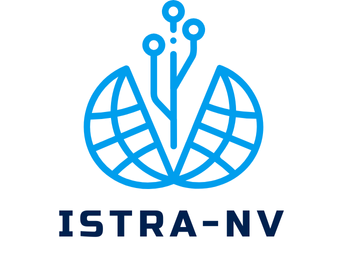Success in any endeavor starts with effective training. Professional athletes don’t just rely on talent; they implement structured routines, discipline, and mental strength. Unlock your potential by adopting strategies from the pros. This guide reveals actionable steps to elevate your training regimen, refine your focus, and enhance your performance. Tailored techniques suit various levels, ensuring everyone can experience growth. Embrace the mindset of a champion and transform your approach to training today. Your successful year awaits!
Understanding Professional Training Techniques
Exploring the intricacies of training techniques for professional athletes reveals a world of precision and customization. These methodologies are not one-size-fits-all; rather, they are meticulously tailored to enhance sports performance in a specific discipline.
Also to discover : Sports Strategies for Success for Sustainable Growth
Professional athletes often rely on a blend of training techniques that include strength conditioning, agility drills, and sport-specific skills. This approach ensures that each athlete develops the necessary physical and mental attributes to excel in their sport. An example of this can be seen in how sprinters focus on explosive power and speed, while marathon runners emphasize endurance and stamina.
Importance of Tailored Training
The importance of specific training cannot be overstated. By tailoring programs to the demands of individual sports, athletes can optimize their performance and reduce the risk of injury.
In the same genre : Fitness Tips for Athletes in 2024 and Beyond
- Strength training for muscle building
- Agility drills for quick movements
- Endurance exercises for stamina
Role of Periodization
Periodization is a strategic approach that divides training into phases, each with a specific focus. This allows for systematic progression and recovery, ultimately enhancing sports performance. By alternating between periods of high intensity and recovery, athletes can maintain peak condition throughout their competitive season. This structured method is crucial for achieving long-term success in any sport.
Crafting an Effective Workout Routine
Designing a comprehensive workout routine is essential for achieving optimal fitness levels. A well-structured training plan should incorporate diverse elements to ensure balanced development.
Components of a Balanced Workout
A balanced exercise regimen typically includes a mix of strength training, cardiovascular exercises, and flexibility workouts. This combination helps in building muscle, improving heart health, and enhancing joint mobility. For instance, a weekly schedule might involve:
- Strength training: 2-3 sessions per week
- Cardio: 3-4 sessions per week
- Flexibility exercises: 2-3 sessions per week
Sample Weekly Training Schedule
Creating a sample weekly training plan can provide guidance and structure. Here's a basic idea:
| Day | Activity |
|---|---|
| Monday | Strength training |
| Tuesday | Cardio |
| Wednesday | Flexibility exercises |
| Thursday | Strength training |
| Friday | Cardio |
| Saturday | Rest or light activity |
| Sunday | Flexibility exercises |
Adapting Workouts for Different Fitness Levels
It's crucial to adapt the exercise regimen according to individual fitness levels. Beginners might start with lighter weights and shorter cardio sessions, while advanced athletes can increase intensity and duration. This customization ensures that each workout routine remains challenging yet achievable, promoting continuous improvement.
Nutrition for Peak Performance
Achieving peak performance requires a well-balanced sports diet that focuses on essential nutrients. Athletes must prioritize their nutrition to fuel their bodies effectively and enhance their capabilities.
Essential Nutrients for Athletes
Athletes need a variety of nutrients to maintain energy levels and support recovery. Key components include carbohydrates for energy, proteins for muscle repair, and fats for sustained endurance. Vitamins and minerals, such as iron and calcium, are also crucial for overall health and performance.
- Carbohydrates: Main energy source
- Proteins: Muscle repair and growth
- Fats: Long-term energy
- Vitamins: Essential for bodily functions
Meal Timing and Its Impact on Performance
The timing of meals can significantly impact an athlete's performance. Consuming the right foods at the right time ensures that the body is adequately fueled before, during, and after exercise. Pre-workout meals should focus on carbohydrates, while post-workout nutrition should emphasize proteins for recovery.
Hydration Strategies for Optimal Training
Proper hydration is vital for maintaining performance and preventing dehydration. Athletes should develop hydration strategies tailored to their individual needs, considering factors such as exercise intensity and environmental conditions. Regular water intake, alongside electrolyte-rich drinks, can help maintain optimal performance levels.
Mental Preparation and Mindset
Understanding the mental game is crucial for athletes aiming to achieve peak performance. A strong mental preparation and a focused athlete mindset can be the difference between winning and losing.
Techniques for Building Mental Resilience
Developing mental resilience involves consistent practice and dedication. Athletes can enhance their sports psychology by engaging in activities that challenge their mental stamina. Techniques such as positive self-talk, stress management, and routine building are essential. Athletes should incorporate these into their daily routines to strengthen their mental preparation.
- Positive self-talk: Reinforces confidence
- Stress management: Reduces anxiety
- Routine building: Establishes consistency
Visualization and Goal-Setting Strategies
Visualization is a powerful tool in sports psychology. Athletes can mentally rehearse their performances, which aids in mental preparation and boosts confidence. Setting SMART goals—Specific, Measurable, Achievable, Relevant, and Time-bound—helps athletes maintain focus and motivation. This structured approach is integral to a robust athlete mindset.
The Role of Mindfulness in Training
Mindfulness exercises are beneficial for enhancing focus and concentration. Techniques such as meditation and breathing exercises support mental preparation by promoting calmness and clarity. Incorporating mindfulness into training allows athletes to refine their athlete mindset, ultimately improving their sports psychology.
Tracking Progress and Adjusting Goals
Understanding the importance of progress tracking in athletic training.
Methods for Tracking Training Progress
Tracking progress is essential for athletes aiming to achieve their goals. Utilizing performance metrics such as time trials, strength benchmarks, and agility tests can provide valuable insights. These metrics help athletes assess their current fitness levels and identify areas for improvement. Digital tools like fitness apps and wearables also offer real-time data, making progress tracking more accessible and precise.
Importance of Regular Assessments
Regular assessments are crucial for maintaining an athlete's trajectory towards success. By evaluating performance metrics consistently, athletes can ensure their training remains effective. This ongoing evaluation allows for timely adjustments to training routines, preventing plateaus and encouraging continuous improvement. As the saying goes, "What gets measured, gets managed."
Adjusting Goals Based on Performance Data
Adjusting goals based on collected data is a strategic approach to achieving long-term success. When performance metrics indicate a need for change, athletes should be flexible in modifying their objectives. This adaptability ensures that goals remain challenging yet attainable. A well-informed athlete can realign their targets, maintaining motivation and focus.
- Performance metrics: Time trials, strength benchmarks
- Regular assessments: Ongoing evaluations
- Adjusting goals: Flexibility and adaptability
Recovery Strategies for Optimal Performance
Understanding the critical role of recovery in enhancing athlete wellness and preventing injuries.
Importance of Rest and Recovery
Rest and recovery are pivotal for maintaining athlete wellness and ensuring injury prevention. Adequate rest periods allow the body to repair and strengthen, reducing the risk of overuse injuries. As the saying goes, "Rest is not idleness; it is the essence of recovery." Integrating structured rest into training schedules is essential for optimal performance.
Techniques for Effective Recovery
Employing effective recovery techniques is crucial for athlete wellness. Methods such as stretching, foam rolling, and massage therapy aid in muscle relaxation and injury prevention. These practices enhance flexibility, reduce muscle soreness, and expedite recovery. Incorporating a variety of techniques ensures comprehensive recovery and supports sustained athlete wellness.
- Stretching: Enhances flexibility
- Foam rolling: Reduces muscle tension
- Massage therapy: Promotes relaxation
Incorporating Active Recovery into Training
Active recovery involves engaging in low-intensity activities that promote circulation and aid in injury prevention. This approach includes activities like swimming, cycling, or yoga, which maintain fitness levels while allowing the body to recover. By integrating active recovery, athletes can sustain their wellness and optimize their performance without compromising on rest.
Incorporating Cross-Training
Enhancing overall fitness through diverse training methods
Benefits of Cross-Training
Cross-training offers athletes a multitude of benefits, enhancing overall fitness by incorporating diverse training methods. It helps in reducing the risk of injury by balancing muscle groups and alleviating repetitive strain. Engaging in different activities can also prevent mental burnout, keeping workouts fresh and exciting. As noted by fitness experts, "Variety is the spice of life, and it applies to training too."
Suggested Cross-Training Activities
Incorporating cross-training into an athlete's regimen can be tailored to specific sports. For instance, a runner might benefit from swimming to improve cardiovascular endurance without the impact stress on joints. Cyclists could engage in yoga to enhance flexibility and core strength. Here are some suggested activities:
- Swimming: Enhances cardiovascular health
- Yoga: Improves flexibility and balance
- Pilates: Strengthens core muscles
Integrating Cross-Training into a Regular Routine
To successfully integrate cross-training into a regular routine, athletes should plan sessions that complement their primary sport. This can be achieved by scheduling cross-training on rest days or as a substitute for a regular workout. By strategically incorporating diverse training methods, athletes can improve their overall fitness and performance.
The Role of Technology in Training
Exploring how technology enhances athletic training.
Wearable Devices for Athletes
Wearable devices have revolutionized athletic training by offering real-time performance tracking and personalized insights. These gadgets, like smartwatches and heart rate monitors, provide athletes with crucial data such as heart rate, distance covered, and calories burned. This information enables athletes to tailor their training technology to meet specific goals, enhancing overall performance. As one coach puts it, "Data-driven training is the future of sports."
Popular Fitness Apps and Their Benefits
Fitness apps have become indispensable tools for athletes, offering a range of features like workout plans, nutrition tracking, and progress monitoring. Popular apps such as MyFitnessPal and Strava allow users to set goals and track achievements, making performance tracking more accessible. These apps provide athletes with the flexibility to customize their routines, ensuring that their training technology aligns with their unique needs.
Analyzing Data for Performance Improvement
The ability to analyze data is crucial for improving athletic performance. By examining metrics from wearable devices and fitness apps, athletes can identify strengths and weaknesses in their routines. This analysis allows for informed adjustments, optimizing training effectiveness. A strategic approach to training technology ensures that athletes remain competitive and continuously improve.
- Wearable devices: Smartwatches, heart rate monitors
- Fitness apps: MyFitnessPal, Strava
- Performance tracking: Data-driven insights
Inspirational Stories from Professional Athletes
Exploring the journeys of perseverance and success in sports.
Case Studies of Successful Athletes
Examining the athlete success stories of renowned professionals offers invaluable insights into the world of sports. For instance, Michael Jordan's journey is a testament to how dedication and resilience can overcome obstacles. Despite being cut from his high school basketball team, Jordan's relentless perseverance propelled him to become one of the greatest basketball players.
Lessons Learned from Professional Experiences
Professional athletes often share profound lessons from their training inspiration. Serena Williams emphasizes the importance of mental toughness, stating, "The success of every woman should be the inspiration to another." Her story illustrates how dedication and focus can lead to unparalleled achievements, serving as a powerful motivation for aspiring athletes.
The Impact of Perseverance and Dedication
The role of perseverance and dedication in sports training is highlighted through various athlete success stories. These elements are crucial in overcoming challenges and achieving greatness. As exemplified by Usain Bolt, whose rigorous training regime and unwavering motivation led him to break world records, the journey of professional athletes underscores the transformative power of commitment in sports.
- Michael Jordan: Overcame early setbacks
- Serena Williams: Advocates mental toughness
- Usain Bolt: Exemplifies rigorous dedication











